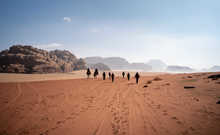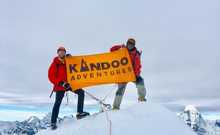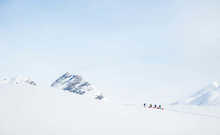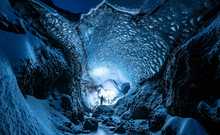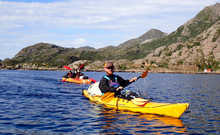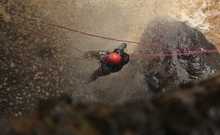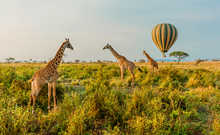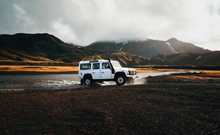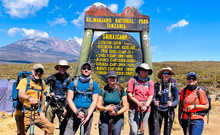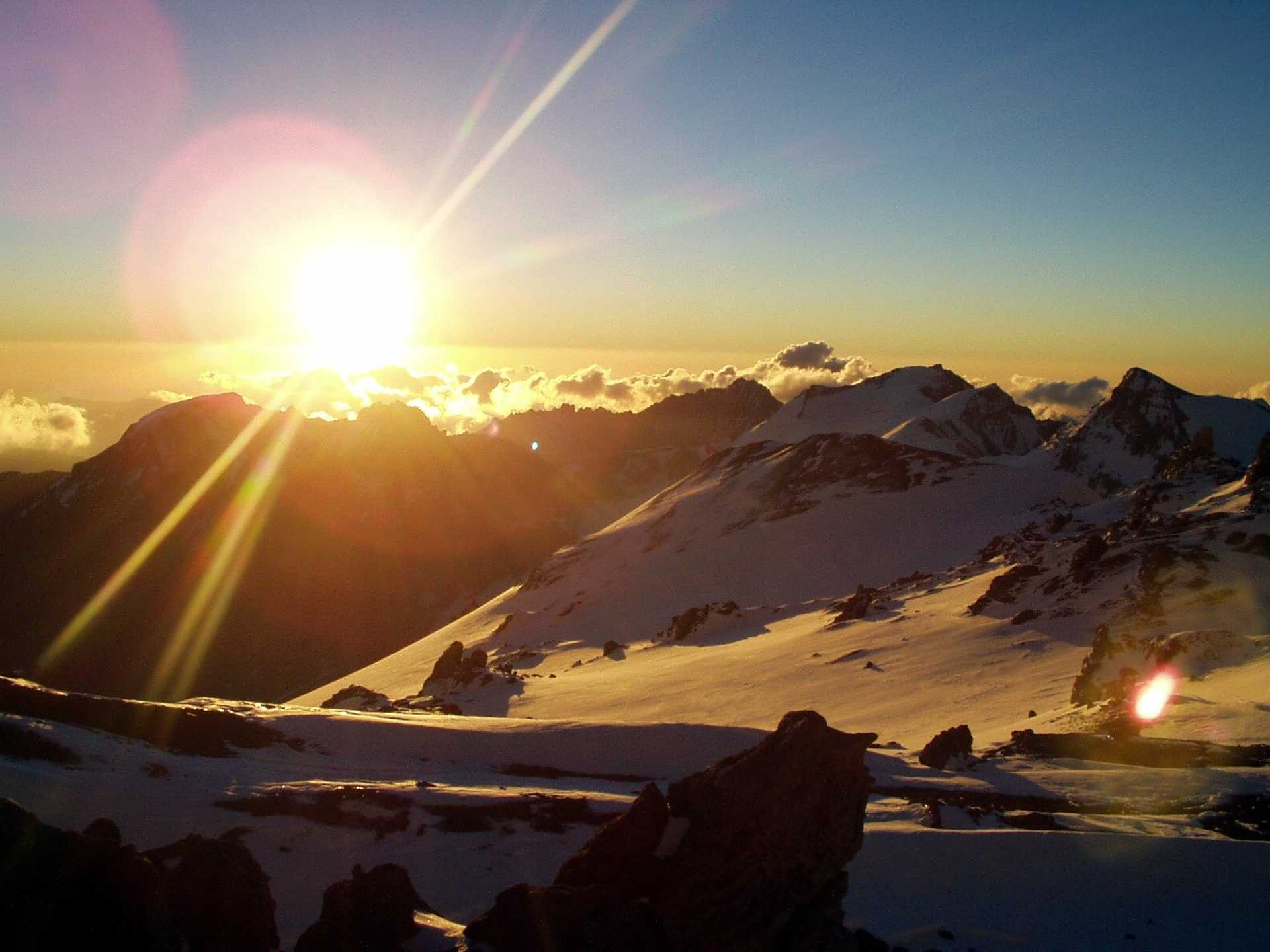Our equipment recommendations for climbing Aconcagua
Basic Equipment


Waterproof duffle bag:
You will need two 110-120L duffel bags. One of them is used for high altitude kit only and will go straight to basecamp.

Expedition backpack:
You will need an expedition backpack, around 60-80 litres. If you are hiring a personal porter you will not need this and can take a larger daypack instead.

Daypack:
25-35L is sufficient. If you are hiring a personal porter, please bring a larger 35-45L daypack. We recommend Osprey daypacks

Insulated sleeping mat:
An insulated mat is required for comfort and insulation. The best system is to combine a foam mat with an inflatable one

Sleeping bag:
You will need a 4-season or -20 Deg C sleeping bag and compression sack. We recommend Mountain Hardwear or The North Face sleeping bags

Trekking poles:
Trekking poles can reduce the impact on your joints by up to 20%. They are great for going down as well as uphill. We recommend adjustable Black Diamond trekking poles

Water bottles:
Capacity to carry at least 2 litres of water. Wide-mouthed nalgene bottles are required as they are less likely to freeze than bladders. A neoprene cover is advisable to help insulate the bottle at higher elevations

Eating utensils:
We provide stoves and cooking utensils but you will need eating utensils: cutlery and a light plastic bowl

Thermos flask:
Essential equipment at high elevations to keep you supplied with hot beverages
Head

Sun hat:
Preferably wide-brimmed for protection, and with a neck cover if you aren't going to be using a neck gaiter

Warm beanie style hat:
Go for a version of beanie that is either knitted or fleeced for extra warmth. Thin enough to fit under your climbing helmet

Neck gaiter or balaclava:
It can get very dusty on Aconcagua and the air very cold. We recommend bringing a neck gaiter or bandana. The most versatile options are made by Buff or Hoo-Rag Headwear. A balaclava may also be required at higher camps

Climbing helmet:
Black Diamond or Petzl make good quality climbing helmets. Make sure your warm beanie fits under your helmet comfortably

Sunglasses:
Choose a pair of high UV protection glacier glasses (category 3 or 4) as sun intensity and snow glare on Aconcagua is strong. Julbo are a great mountain sunglasses brand, but any pair of high UV protection sunglasses with side shields will suffice

Ski goggles:
A dark pair of goggles that block 100% of UV light. If you wear prescription glasses, make sure the goggles fit over them

Headlamp:
You will need a headlamp with good light output for any late night toilet journeys. They are also quite useful for reading at night and required on all out trekking peak climbs. We recommend Petzl headlamps
Hands and Feet

Liner gloves:
Thin gloves used as 'first skin' under your thicker gloves. Silk, merino or micro-fleece work well

Lightweight gloves:
For daily use we recommend lightweight, fleece or quick drying fabric gloves. Berghaus and The North Face make good lightweight gloves

Waterproof gloves:
Thick, waterproof shell gloves with enough dexterity to handle climbing gear. They should cover up to your forearm and have cords to prevent them getting blown away

Summit mittens:
Insulated heavyweight mittens with safety straps that fit over your liner gloves to provide additional warmth and wind protection. They have to be warm and extremely weather-proof

Socks:
At least 5 pairs of outer socks and 5 pairs of liner socks. We also recommend bringing 1 x thick thermal socks for the upper reaches of your climb. Merino wool is the best material and Bridgedale or Smartwool make good trekking socks

Training shoes:
To wear around Base Camp we recommend you bring a pair of training shoes or sandals

Trekking boots:
We recommend using a mid-weight hiking boot with good ankle support. Recommended brands include: Salomon, Scarpa, Hi-Tec and Merrell

Climbing boots:
An Aconcagua expedition demands double or triple boots designed for extreme cold. Can be plastic or synthetic but must have a shell and a liner. Triple boots are warmer and have an over-boot that works as a gaiter

Crampons:
C2 crampons that fit your climbing boots. Automatic or semi-automatic, made of steel, work best. Grivel and Petzl are leading brands

Gaiters:
Waterproof, breathable gaiters that cover your ankle. Need to fit well over your climbing boots if your boots don't have built-in gaiters
Upper Body

Thermal base layer: 2 x thermal base layer, ideally made from merino wool. No cotton. Recommended brand is Icebreaker

Long sleeved shirt: The approach to Base Camp can be warm and sunny. A lightweight, fast-drying shirt is ideal for protection from the sun

Soft shell jacket: A mid-weight breathable jacket that is wind and snow-resistant, and ideally with a hood. Needs to fit over base and mid-layers

Warm fleece: A mid-weight polartec fleece jacket is ideal. Berghaus, Helly Hansen and The North Face all make great fleeces

Hard shell outer jacket: A water/windproof hard shell outer jacket to protect you from the elements.It needs to feature a hood that fits over a climbing helmet. Goretex material is best. Recommended brands include The North Face, Arc'teryx, Berghaus and Mountain Hardwear

Expedition parka: A good quality and warm down or primaloft jacket is required for the upper reaches of your climb. Ideally it has to fit over all your other layers. Recommended brands include The North Face, Rab, Arc'Teryx and Mountain Hardwear
Legs

Base layer:
'Lightweight' or 'silk weight' base layer for your legs. Merino wool is preferable. Recommended brand is Icebreaker

Midlayer:
A thicker thermal layer that will act as an insulating layer. Powerstretch 100, wool or fleece are good materials

Softshell trousers:
Similar material to your softshell jacket. These trousers will be your outermost layer most of the time and should be wind and snow-resistant

Insulated trousers:
Insulated trousers with down or synthetic padding which will need to fit over your mid-layer. Side vents are ideal for regulating temperature when climbing

Hard shell trousers:
To protect yourself from the elements you need a good pair of waterproof / windproof hard shell trousers. Ideally Goretex. Patagonia, The North Face and Arc'teryx make good outer trousers
Odds and Sods

Wet wipes and hand sanitizer: Staying clean on an Aconcagua climb can be challenging. Wet wipes and hand sanitizer are a huge help

Personal medicines and medical kit: We recommend bringing Paracetamol and Imodium at a minimum

Pee bottle (optional): Useful for late night toilet needs when it is freezing outside

Personal snacks: Boiled sweets, nuts, energy bars and dried fruit are all a good shout

Dry bag: Only required if your main duffle bag or rucksack is not waterproof. Sturdy rubble sacks will also help to keep your kit dry

Camera and spare batteries: Unless you are a keen photographer we recommend taking a good quality and lightweight point and shoot camera like the Panasonic Lumix.

Plug adapter:
A plug adapter for charging your devices in the hotels before and after the climb. The standard voltage and frequency in Argentina is 220 V and 50 Hz respectively. The power sockets that are used are of type C and I
